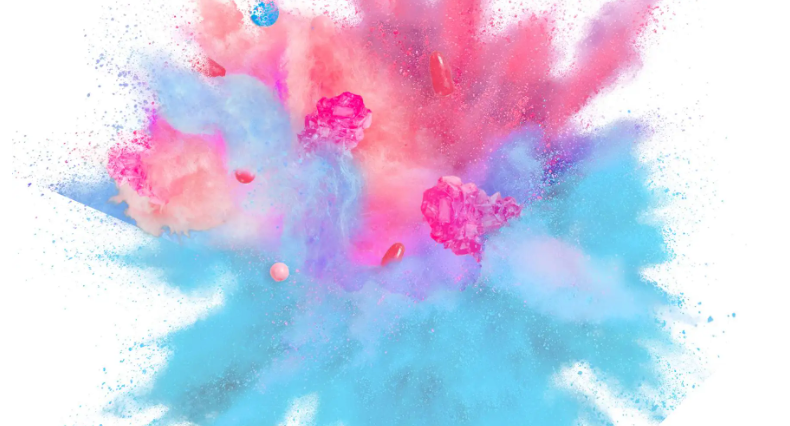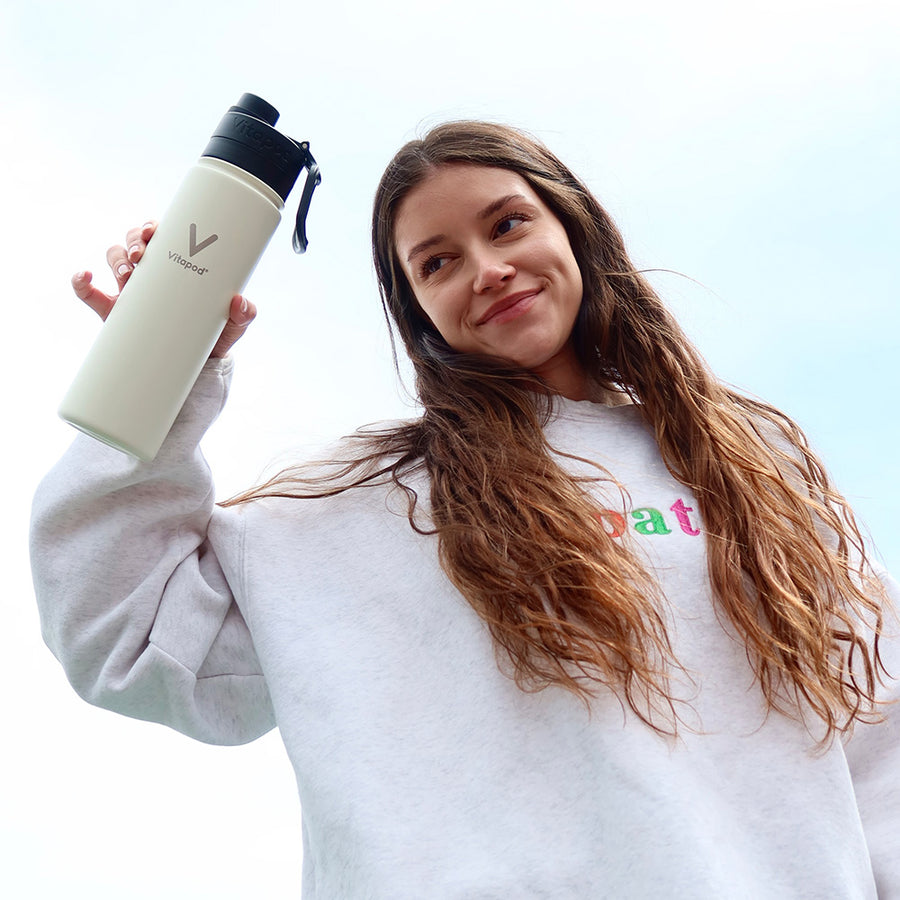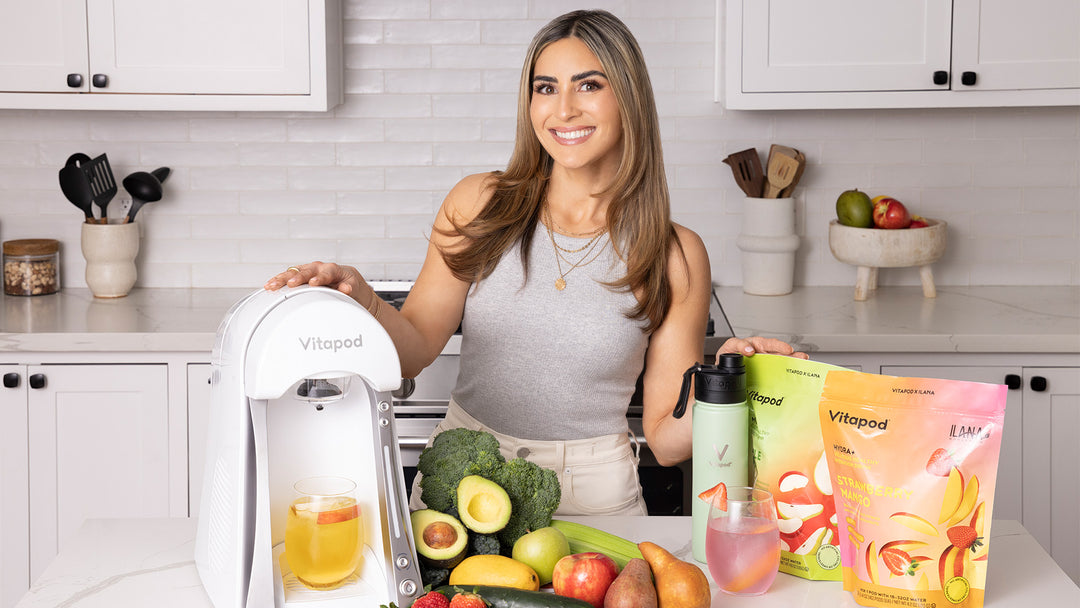HYDRA Pod: For Optimal Hydration

75% of Americans are chronically dehydrated – and most people don’t even realize it. With high sodium diets and caffeinated drinks the average person isn’t drinking enough water for optimal health. We developed our Hydra pods to meet all your hydration needs - they are specially designed with electrolytes, minerals, and flavonoids. Oh, and let’s not forget about the flavors – coming in lemon infusion iced tea and cotton candy our Hydra pods are both hydrating and delicious.
What We Love About HYDRA:
- Zero sugar.
- Low sodium.
- No artificial colors or flavors.
- Only 8 calories a drink.
- Packed with electrolytes.
How does HYDRA hydrate?
With our mix of electrolytes and minerals!
Electrolytes conduct electricity when mixed with water and play a key role in keeping water in and out of your cells – essentially keeping you hydrated. The electrolytes that are in our Hydra pods are sodium, potassium, magnesium and calcium. On top of keeping you hydrated, these minerals are also essential to full body health.
What’s the difference between HYDRA and HYDRA+?
Vitapod Hydra beverages, without the “+,” include a unique blend of electrolytes, minerals, and powerful plant-based antioxidants, without the vitamins that Hydra+ offers. These drinks are purely focused on hydration rather than the nourishment and hydration that Hydra+ offers.
The Sugar Crisis:
Studies show that the average adult consumes around 17 teaspoons or 71.14 grams of added sugar a day. This exceeds our daily recommended value – shocker! This unnecessary intake of sugar and calories from beverages has been linked to the obesity epidemic - which is why we formulated our Hydra drinks to be zero sugar.
REFERENCES:
- PopkinBM, D'Anci KE, Rosenberg IH. Water, hydration, and health. Nutr Rev. 2010;68(8):439–458. doi:10.1111/j.1753-4887.2010.00304. https://pubmed.ncbi.nlm.nih.gov/20646222/
- Armstrong LE, Johnson EC. Water intake, water balance, and the elusive daily water requirement. Nutrients. 2018;10(12):1928.https://pubmed.ncbi.nlm.nih.gov/30563134/
- Cheuvront SN, Kenefick RW, Charkoudian N, Sawka MN. Physiologic basis for understanding quantitative dehydration assessment. Am J Clin Nutr. 2013;97(3):455–462. https://pubmed.ncbi.nlm.nih.gov/23343973/
- Jéquier E, Constant F. Water as an essential nutrient: the physiological basis of hydration. Eur J Clin Nutr. 2010;64(2):115–123. https://pubmed.ncbi.nlm.nih.gov/19724292/
- QuattriniS, Pampaloni B, Brandi ML. Natural mineral waters: chemical characteristics and health effects. Clin Cases Miner Bone Metab. 2016;13(3):173–180. https://pubmed.ncbi.nlm.nih.gov/28228777/
- Drewnowski A, Rehm CD, Constant F. Water and beverage consumption among adults in the United States: cross-sectional study using data from NHANES 2005-2010. BMC Public Health. 2013;13:1068. https://pubmed.ncbi.nlm.nih.gov/24219567/
- MalisovaO, Athanasatou A, Pepa A, et al. Water intake and hydration indices in healthy European adults: The European Hydration Research Study (EHRS). Nutrients. 2016;8(4):204. https://pubmed.ncbi.nlm.nih.gov/27058557/
- Braun H, vonAndrian-WerburgJ, Malisova O, et al. Differing water intake and hydration status in three European countries-a day-to-day analysis. Nutrients. 2019;11(4):773. https://pubmed.ncbi.nlm.nih.gov/30987139/
- Benton D, Jenkins KT, Watkins HT, Young HA. Minor degree of hypohydration adversely influences cognition: a mediator analysis. Am JClinNutr. 2016;104(3):603–612. https://pubmed.ncbi.nlm.nih.gov/27510536/
- Suh H,KavourasSA. Water intake and hydration state in children. Eur J Nutr. 2019;58(2):475–496. https://pubmed.ncbi.nlm.nih.gov/30506317/
- BelvalLN, Hosokawa Y, Casa DJ, et al. Practical hydration solutions for sports. Nutrients. 2019;11(7):1550. https://pubmed.ncbi.nlm.nih.gov/31324008/
- Thomas DT, Erdman KA, Burke LM. American College of Sports Medicine Joint Position Statement. Nutrition and Athletic Performance. MedSciSports Exerc. 2016;48(3):543–568. https://pubmed.ncbi.nlm.nih.gov/26891166/
- Institute of Medicine of the National Academies. Water. Dietary Reference Intakes for Water, Sodium, Chloride, Potassium and Sulfate. Washington, D.C: National Academy Press; 2005. pp. 73–185.https://www.nationalacademies.org/our-work/dietary-reference-intakes-for-electrolytes-and-water
- Burke LM, Castell LM, Casa DJ, et al. International Association of Athletics Federations Consensus Statement 2019: Nutrition for Athletics.IntJ Sport Nutr Exerc Metab. 2019;29(2):73–84. https://pubmed.ncbi.nlm.nih.gov/30952204/
- Evans GH, James LJ,ShirreffsSM, Maughan RJ. Optimizing the restoration and maintenance of fluid balance after exercise-induced dehydration. J Appl Physiol (1985). 2017;122(4):945–951. https://pubmed.ncbi.nlm.nih.gov/28126906/
- SollanekKJ, Tsurumoto M, Vidyasagar S, Kenefick RW, Cheuvront SN. Neither body mass nor sex influences beverage hydration index outcomes during randomized trial when comparing 3 commercial beverages. Am J Clin Nutr. 2018;107(4):544–549. https://pubmed.ncbi.nlm.nih.gov/29635499/
- Pérez-IdárragaA, Aragón-Vargas LF. Postexercise rehydration: potassium-rich drinks versus water and a sports drink.Appl Physiol Nutr Metab. 2014;39(10):1167–1174. https://pubmed.ncbi.nlm.nih.gov/25017113/
- United States Department of Health and Human Services and United States Department of Agriculture. Dietary Guidelines for Americans, 2015–2020. 8th ed Washington (DC): US Department of Health and Human Services and USDA; 2015.https://www.dietaryguidelines.gov/current-dietary-guidelines/2015-2020-dietary-guidelines
- FerruzziMG, Tanprasertsuk J, Kris-Etherton P, Weaver CM, Johnson EJ. Perspective: The role of beverages as a source of nutrients and phytonutrients. Adv Nutr. 2020 May 1;11(3):507-523. https://pubmed.ncbi.nlm.nih.gov/31755901/










